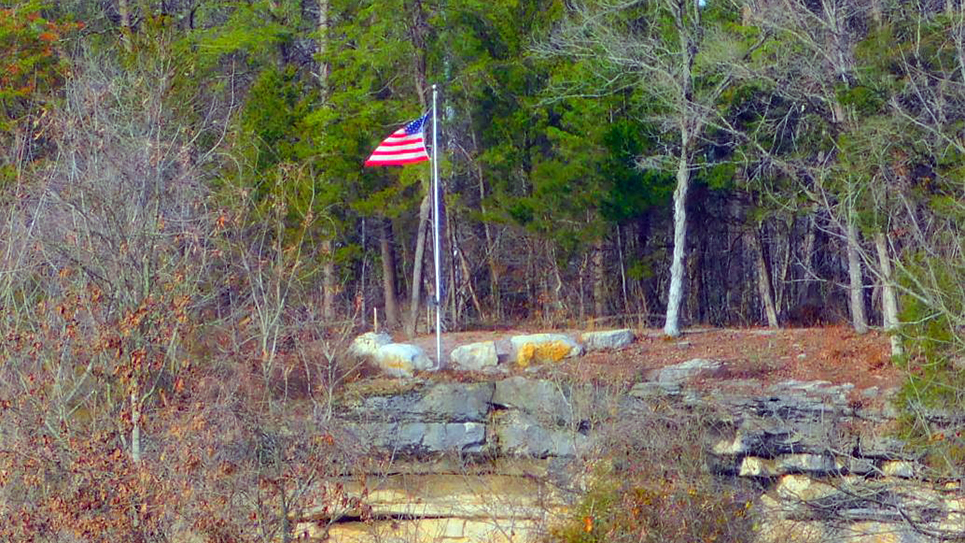By Mike Steely
We are so blessed to live in an unusual part of our nation. You may not think of it but there’s lots of places within a day’s drive where you can encounter oddities of nature and man.
For instance, Cumberland and Pine Mountain in Tennessee, Virginia and Kentucky were both formed by ancient upsurges at the earth’s crust. Both are faulted far below the surface and where the limestone in Cumberland Mountain faces south the same limestone in Pine Mountain faces north, with a deep valley between the two peaks.
Within an easy drive you can visit Middlesboro, Ky., which sits in the middle of an ancient meteor crater formed many years after the uplift. The three-mile crater is visible from the air and portions of the ancient meteor wall can be seen along U.S. Highway 25E.
The Bell County Museum at 207 North 20th Street has information on the meteor strike as well as much of the area’s natural and human history. It’s open Tuesday through Friday 10-4 and Saturdays 11-3. You can find them on the internet or call 606-242-0005.
There are other places in our region that have evidence of a meteor strikes including Erin, Tennessee, with a crater eight miles wide. Called the Wells Creek Basin Crater, the site is on Route 149 in Northwest Tennessee southeast of Clarksville.
Northwest of Clarksville is the Flynn Creek meteor site. One mile north of Fayetteville is the Hopewell Meteor site.
North of the town of Kingston Springs in West Tennessee, along Cedar Hill Road and Narrows of the Harpeth Road, is a man-made tunnel that at first appears natural. The Montgomery Bell Tunnel, or Patterson Forge Tunnel, was built by dynamite and slave labor to divert part of the river to a mill. Today you can view the long-abandoned tunnel along Narrows of the Harpeth.
At one time you could walk through the tunnel but part of it has fallen in and that’s not permitted anymore. It’s near the Harpeth River State Park. Getting there is an exit off Interstate 40 to Cedar Hill Road. Along the way you may want to stop by the Mound Bottoms archeology site where Native Americans lived thousands of years ago.
Natural Arches are scattered across our region including several in Pickett CCC Memorial State Park near Jamestown, at the Big South Fork Natural Recreation Area, and arches are located within 23 of our 95 counties.
Two of the most unvisited arches are located within an hour drive from Knoxville. Parrottsville, is a small town east of Newport, and where North Highway 340 crosses is a low arch. The natural bridge can be viewed by parking near the road and walking around and down to where the creek cuts its way through the rock, forming an arch that was ideal for a roadway.
The Big South Fork has several natural arches including the impressive Needle Arch. Near Sewanee in Franklin County is a Natural Bridge that is 25 feet high and 50 feet long. There are numerous natural arches in both Cumberland and Pine Mountain that are not on state, county or federal lands that hikers know and visit.
If you’re into bluegrass or Americana music you might want to consider visiting Cumberland Caverns near McMinnville. The “largest show cave” in the state has a venue for music and also offers tours and even “wild caving” adventures. Another caves popular with Knoxville-area residents include Cherokee Caverns on Oak Ridge Highway, Tuckaleechee Caverns, and The Lost Sea near Sweetwater.
The Lost Sea features a huge underground lake and a glass bottom boat gives rides inside the cavern.
Another unusual and unexpected site within our region is just south of Cleveland near the Georgia line. Red Clay State Park was the site of the final counsel of the Cherokee Indians prior to forced removal to resettle in the west.
Inside the park, behind the museum and gift shop is “Blue Hole” a pool of deep blue water that flows from beneath the ground, pools up there and then runs off. A pathway leads beside and around the unusual pool.






